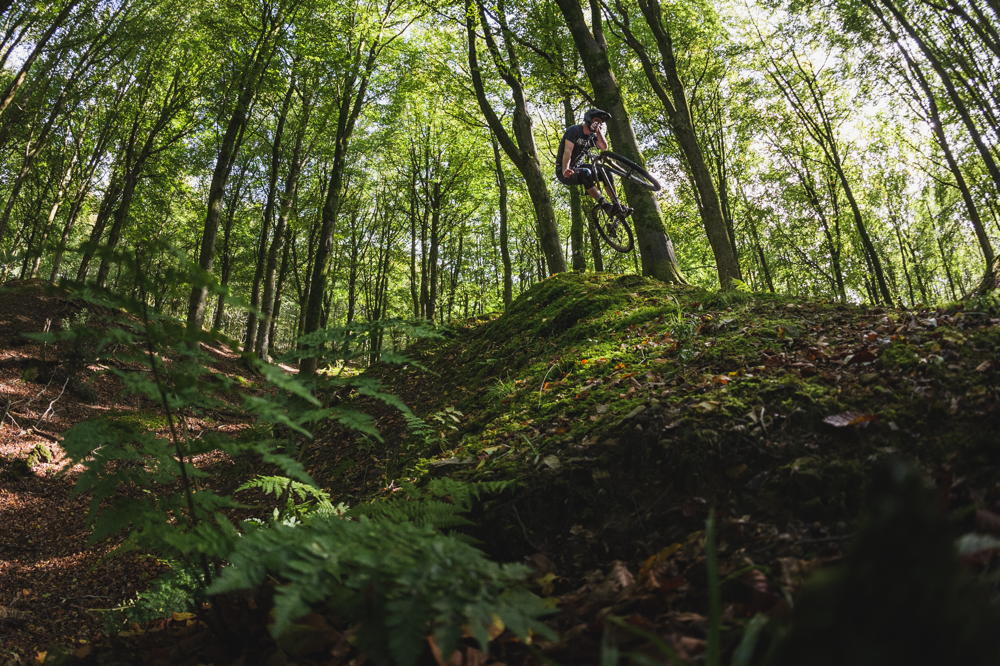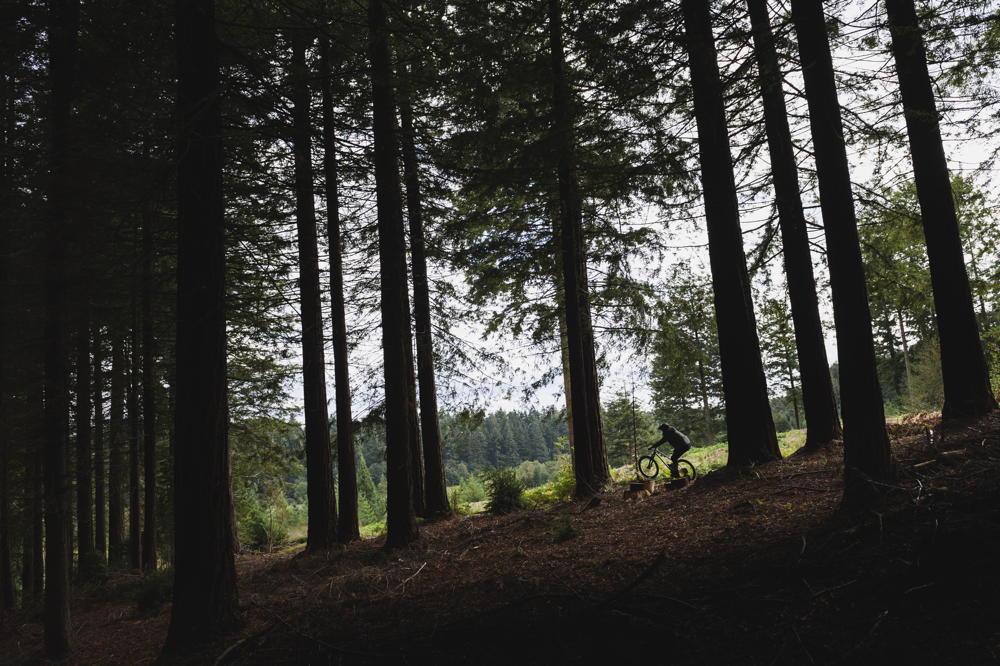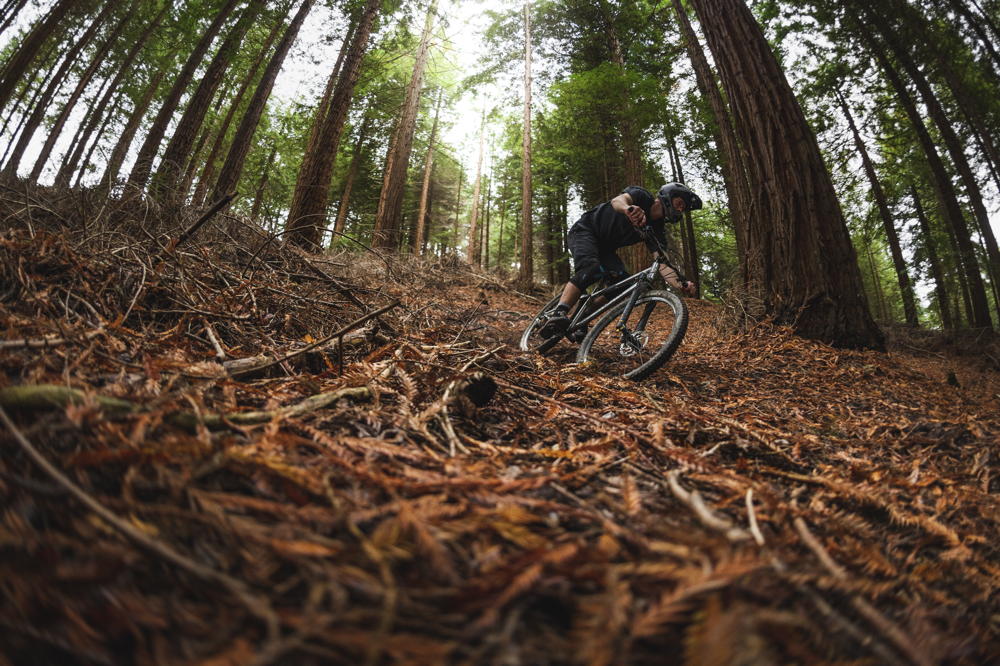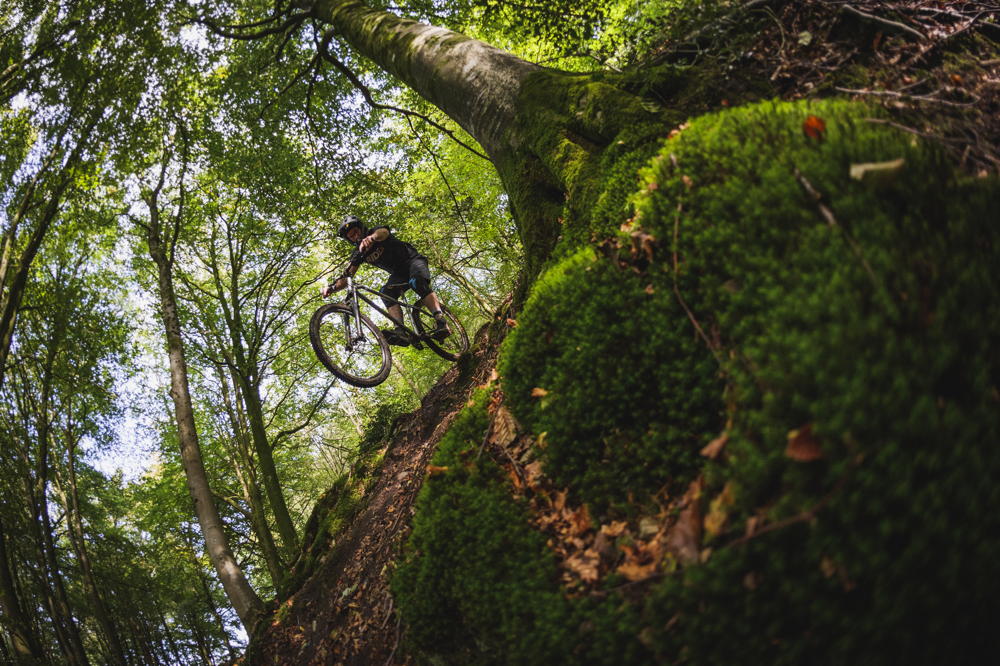We head to Frome in Somerset, the birthplace of a Belter or two
Quintessentially British, the hardcore hardtail is a singletrack institution. We head to Frome in Somerset, the birthplace of a Belter or two.
>>> Black Friday 2019 mountain bike deals: the offers continue to roll in
With this Best of British series we’ve been looking at the trails that have had a direct influence on bike designers and in turn the bikes we ride today. But what happens when a bike designer creates a bike specifically for a trail they’ve never seen, let alone ridden? What happens when vision eventually meets reality – and to top things off it’s a race.

The mill building in Frome that houses BTR Fabrication’s workshop is a hub of activity. The Bicycle Academy, which teaches frame building to anyone keen on learning their MIG from their TIG, occupies much of the ground floor. While enthusiastic students learn the ins and outs of wielding a welder, next door in Unit 19b Paul ‘Burf’ Burford is polishing his own brand of perfection.
BTR Fabrications HQ is exactly what you expect of a brand that’s more interested in the craft and quality of its products than slick appearances. A small office room houses all the usual bits and pieces needed to run a modern business along with a shelf full of metal tubing and CNC parts, frame boxes and a large lever mounted to a desk – likely for coaxing metal into shape. Prototype frames hang from the ceiling, a history of the company in metal form. Step through into the workshop and it’s everything you hope it will be. Machines for bending, cutting and manipulating metal occupy much of the floorspace. Welding benches, a wall of tools and race plates, the mandatory door layered with vinyl stickers and a shelf with broken components and prototypes – offerings to the God of speed – take up the rest of the space. It has the unmistakable feel and smell of somewhere where things are made.

Burf’s bikes are tongues to the trails’ grooves
Originally started by uni friends who were doing a degree in motorsport engineering Burf and Tam Racing is now just Burf. An expert category Downhill racer he decided to switch from riding full suspension bikes to hardtails, partly because as a student it was more economical to keep a hardtail running but also because he believed it would progress his riding skills quicker. Despite initial misgivings from his riding mates Burf found he wasn’t particularly hindered by the lack of rear bounce. The only problem was finding a hardtail that met his needs, something strong enough to take a race-pace beating with geometry that didn’t hold him back.

With their skills in design and fabrication, coupled with a desire to start a bike company they could call their own, the decision to start building frames was a pretty straightforward one. Inspired by the likes of Brooklyn Machine Works, Curtis and Revel Bikes the pair were looking to create the kind of bikes they wanted to ride; bikes that were reliable enough to be ridden hard for a race season and finished to a high standard.
When they came up with the geometry for their first hardtail, the Belter, even Burf thought it was a bit extreme. A 61º headangle was unheard of on a World Cup DH race bike, never mind a hardtail. But there was method to the madness as Burf explains. With a hardtail your pivot point is the rear tyre’s contact patch. With no rear suspension to sag the headangle rapidly steepens when you start riding downhill, so starting with something really slack gives you something just slack in actual use. Having experimented with various fork lengths, including a 180mm triple clamp fork, 150mm of travel seemed to work best on the Belter. BTR had their very own DH race hardtail.

Telltale signs of a well-oiled workshop
When The Dudes Of Hazzard arranged the first Spirit Of Enduro race in 2012 on their home trails around Kinlochleven just south of Fort William Burf and Tam signed up, intrigued by the format and the promise of some great trails. Despite Tam growing up near to Kinlochleven he’d done very little riding there and had no idea what the trails might be like, other than typically Scottish. That is to say rough, rocky and probably wet.

The Ranger gets a personalised ‘number plate’
This was quite a commitment, for a start the race was at the other end of the country and neither of them had actually entered an Enduro race before. To make sure they made the most of it the pair decided they’d design a frame especially for the race. The Belter was designed to be a DH race hardtail. Its super slack headangle and floor-dragging bottom bracket height made for a super reassuring descender but possibly wasn’t the ideal tool for an Enduro race.
Tighten the belter
A hardcore hardtail with a relatively short travel 120mm fork might have raised some eyebrows but it took lessons learned with the Belter. A long travel fork means dramatic swings in geometry on steep descents whereas a shorter travel fork keeps geometry more consistent. A slightly raised bottom bracket meant pedaling would be easier over rocky terrain and a longer front centre coupled with a steeper seat tube would make things more stable and comfortable over the long day in the saddle.

BTR mixes old-school material with brand new geometry
Somerset isn’t exactly known for its long and rocky downhills, but with plenty of experience riding a hardtail at downhill race venues in Wales like Rheola and Mountain Ash Burf had a good idea of what to expect in Scotland. Sort of. A brutal three minute DH run is a bit different to a full day in the saddle on Enduro stages and liaisons.

Reynolds tubing makes the marque that bit more British
When Burf and Tam finally arrived at the start line of the Spirit Of Enduro race Burf was onboard a well finished Reynolds tubed frame, essentially a production version of the Ranger. Due to only having enough tubing to build one bike Tam drew the short straw and rode a proof of concept prototype made of mild steel that weighed a ton, hand painted in red oxide. Despite taking a beating both riders and bikes survived the race and came away smiling and knowing they were onto something with this new frame design.
While the Ranger might have been originally conceived to tackle a race in Scotland there’s plenty of Somerset influence to it. What Frome might lack in altitude it makes up for with woodland. Large swathes of the countryside is taken up with forest, all seemingly on the kind of hillside perfectly suited for trails. Natural lumps and bumps make building a fun trail as simple as raking in a rough line – possibly one of the reasons BTR make their own trail tool.

Zipping through the treesl Burf’s background in downhill racing shines through. A tall bloke he has that easy almost lazy look on a bike that the likes of Greg Minnaar and Steve Peat have. Equally every small lip is used as a jump, corners are taken at full lean and he’s quite happy to throw out a leg if it means getting the back end out a bit more – it’s no accident that Burf signs off his emails with ‘Keep ‘er sideways’. It’s not showboating, it’s just the way he rides and clearly what he rides for. The way Burf rides says just as much about the frames he makes as the trails he builds and rides.
There’s a touch of romance to buying a frame from a brand like BTR. While all the designers in the Best of British series have played a vital part in bringing their creations into being Burf has personally built every single BTR frame. Designer, builder, quality control – nothing is missed or passed over. Every step of the process is overseen by one man, every frame is a labour of love.

Making and riding his own bikes, he’s living the dream isn’t he? Burf laughs, “Well, the dream was to have a workshop at the bottom of a hill with trails running down it so we could test out prototypes.” As romantic as it all seems being a one man operation means as well as building the frames there’s all the other trappings of running a business to deal with along with a home life. Time riding what his creations is precious.
The woodland is starting the fade from summer green to autumn yellow. Leaves are falling and slowly covering up the trails, some of which look like they were vague to start with. Tell tale ruts and berms dot the hillside and it’s our job to piece them together as we ride. Burf isn’t afraid to get a bit loose and carve the bike from one edge of the tyres to the other throwing up leaves and dirt as he changes direction. The geometry that was originally designed to work in the Highlands has no issues working here. That first Ranger had 26inch wheels but is now available to fit 27.5 or 29inch wheels. Burf’s preference is for the middle wheel size – in his view it’s more of an all rounder and looking at the way he rides it makes the most sense. Jump, hop, manual, slide – speed and maneuverability combined.

BTR primed its design on the Somerset singletrack
We move from one area of woodland to the next dodging the rain showers that blow in and over us. The trails keep a similar flavour but the feel changes. Beech and oak give way to large redwoods, the sandy trail covered in a carpet of copper coloured needles. The trail is more defined here, a dark streak through the towering trees.
Just the job
Pushing back up a section of trail two rides peer down at us, a father and son out for a ride. The son’s face lights up when he sees the trail meandering through the trees and the jumps spread along it. He’s riding a late ‘90s Cove Handjob with red Marzocchi Bomber Z2s and XT V-brakes – one of the orginal steel hardcore hardtails. In many ways bikes like the Ranger are an evolution of the Handjob. A hardtail designed to upset full suspension bikes and more capable and fun than you’d initially give it credit for. British riders have always had a thing for a hardcore hardtail and while we used to look to Canada and BC in particular for inspiration there’s talent to be found within the British BA postcode these days.

A hardtail can sail under a proficient pilot
The appeal of the hardcore hardtail has always been that it’s the perfect tool for just messing about in the woods on. Uncomplicated, rewarding, it’s as much bike as you need most of the time. The Ranger’s 120mm of travel is enough to take the edges off big bumps but keep things sharp and direct for twisting through the trees. “People ask if they can fit a 140mm fork to the Ranger and I try to talk them out of it. Trust the geometry.” says Burf. It’s easy to get carried away with technology but there’s a real thrill getting back to basics on a bike made of just nine tubes. The genius is in how those nine tubes are arranged.

As Burg is wont to say, ‘keep ‘er sideways’
Wind Hill Bike Park is one of Burf’s regular riding and testing areas. A short drive from Frome the trails cater for everyone from those looking for a bit of well built flow to those after something more extreme. One intimidating looking step-up jump in particular seems to have drawn a small crowd of riders eyeing it up. Burf drops straight in and sends himself skyward, throwing in a saddle grab for good measure. “Fair play for doing that on a hardtail!” exclaims one of the onlookers. It seems there’s still work to be done to remind people what a sorted hardtail in the hands of a good rider is capable of.
While the geometry even on the tamed down Ranger was once seen as extreme other more mainstream brands are catching up and catching on. “You can get a frame made, painted and shipped to the UK from the Far East cheaper than I can get it powdercoated” says Burf. That may well be true but with brands like BTR you are buying into something special. You’re part of a chain that links the trails in Somerset (and Kinlochleven), Burf’s passion and experience with a welder and your own trails – the Best of British indeed.
About this Best of British series
The UK is a world leader in mountain bike design. We have a proud engineering heritage and a stoic pragmatism that has given us a reputation for timeless, practical design. At the same time we are open minded and innovative, unafraid of pushing boundaries and not resting on our laurels. From men tinkering in sheds to large scale engineering companies we are a nation of thinkers and doers, evidenced by the number of bike brands that call the UK home.
We’ve more than just curiosity and engineering know-how to thank for this though, the geography of the British Isles has played an equally important role in influencing the design our bikes. In this series we are going to talk to UK bike brands and explore the trails that have influenced their design decisions. We want to find out if there was one trail that informed a bike’s design, a particular section of a ride that gave a eureka moment, how has Britain’s landscape shaped the bikes we ride today?




